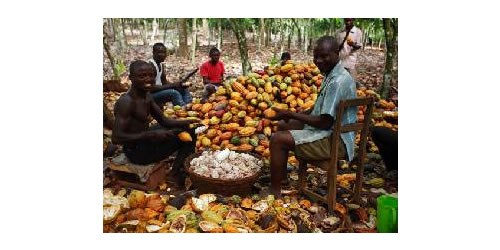Dry weather worries cocoa farmers ahead of light crop

The upcoming light cocoa crop will do little to help the world’s number-two grower reach a government target of 850,000 tonnes due to insufficient rain, farmers and traders have said.
Ghana’s 2014/15 output came in at 730,000 tonnes of beans, well below an initial forecast of more than 1 million tonnes, due to poor weather and what farmers said were inadequate supplies of fertiliser and pesticides.
Industry regulator Cocobod’s 2015/16 production target, set at the start of the season in October, is in line with Ghana’s average annual output of 850,000 tonnes; the bulk of which is harvested during the main crop that runs from October to May.
The light crop, also called the mid-crop, is expected to open next month though its start date can vary, and officials are confident Ghana is still on track to hit its target.
“We are on course to realise our projection,” said Cocobod spokesman Noah Amenyah who declined to give production figures so far this season, saying the information is market-sensitive.
But while weather conditions have improved compared with last year, farmers said rains, which started in March and are vital to the development of the light crop, have been insufficient and patchy.
“We need rain now, urgently,” said Nana Johnson Mensah who represents thousands of growers in the Western Region, Ghana’s most significant cocoa growing area. “When the rain started everything was set to improve … but we need more.”
Below Average
Pomasi Ismail said his 24-acre farm in Mankranso-Aburaso in the Ashanti Region had yielded 40 percent less per acre than in 2014/15 because of adverse weather.
“The major challenge we have faced this year has to do with the drought. It has affected us very much,” he said, adding that there has only been 10-12 days of rain since March.
“Because we didn’t get enough rain during the main crop we thought we could have more for the light crop. But the drought is so severe it will really affect our light crop yield.”
Still, most farmers said production has increased from the 2014/15 harvest, and the distribution of fertilisers and pesticides by Cocobod has also improved.
“The light crop projection, if we could give a scale of one to 10, I would peg myself around six … Had it not been for the drought it would have been splendid,” said Asante Bekwai who farms in the Ashanti Region.
Nevertheless, local buyers and traders said the overall crop still looks set to end with output below the long-term average.
One trader at a London-based company said main crop purchases standd at about 650,000 tonnes, with a further 100,000 tonnes expected during the light crop.
“People have got very poor mid-crop numbers out there due to the dry harmattan over December/January,” another trader said, forecasting a light crop of about 80,000 tonnes.
A local buyer also cast doubt on Cocobod’s projections, saying overall production will likely be around 780,000 tonnes given the lack of rain.
A broader concern is that the West African country’s production may have “topped out”, given the advanced age of many trees and an aging cocoa workforce; meaning that output may not increase much over the next five years, the buyer said.
Source: B&FT



